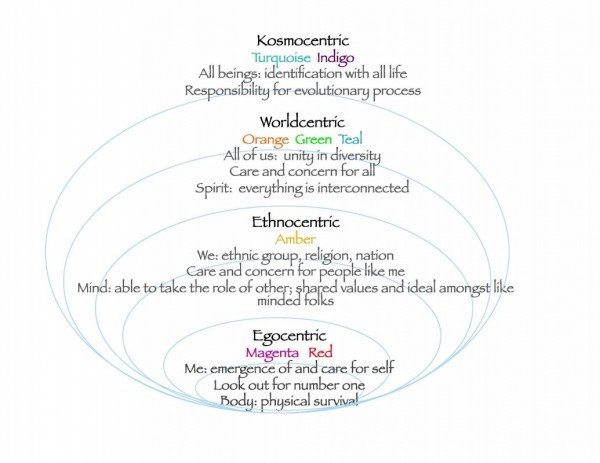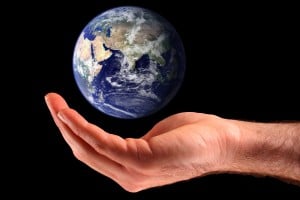If we have no peace, it is because we have forgotten that we belong to each other.
Mother Teresa
One of the best ways to describe the movement of through levels of development is to see the progression as widening circles of compassion. Merriam-Webster defines compassion as a sympathetic consciousness of others’ distress together with a desire to alleviate it. Compassionate acts are those that take into account the suffering of others and attempt to alleviate that suffering as if it were one’s own. In this sense, the various forms of the Golden Rule are clearly based on the concept of compassion.
Compassion is one of the most powerfully life-giving dynamics that make up authentic humanness—because compassion is not a commodity available to us, but rather a way of consciousness that is organic and fundamental to the very structure of our humanness. The further we are from living compassionately, the further we are from our very humanity.
Clearly we don’t start life this way, nor should we. Children have an egocentric perspective on the world, which gradually expands over time. It is not helpful to expect more than what a child is developmentally able to do. What researchers have shown is that the move from egocentric to ethnocentric, which generally begins between age seven and twelve, is just the beginning of human’s capacity to widen their circle of compassion. Ethnocentric means one has moved from care only for oneself to compassion for others who are like us. This may mean my tribe, my country, or my religious group .The key is an appreciation of the perspective and suffering of those who are like me. Adults whose perspective is at this level adhere to conformist roles and rules. Religiously they are comfortable with the doctrines of their religious tradition, generally seeing theirs as the only way.
When I said last week that it is not the religions that are causing us problems, but the level of development of those who are practicing in a particular religion, this is what I meant. If one’s level of development or center of gravity is ethnocentric it is very difficult to appreciate differences. We see this writ large particularly with regard to religious differences but political differences aren’t far behind. Many would say they are inextricably intertwined!
As one moves beyond an ethnocentric perspective the circle of compassion expands to include all people, regardless of difference from oneself. Here we question rigid belief systems and conventional rules and roles. Social activism that is concerned with the whole world is part of this perspective, so it is called worldcentric.
For hundreds of years we viewed the perspectives and actions of these kinds of people as extraordinary. Gandhi, Mother Teresa, Martin Luther King to name just a few, seemed super human. They are the ones we look up to but don’t think we can emulate. The kind of compassion seems extraordinary because it calls us to bear witness to life, everywhere. It asks us to make sacrifices and stand for issues that may cause great personal discomfort. Einstein said it much better than I:
“A human being is part of a whole, called by us the Universe, a part limited in time and space. He experiences himself, his thoughts and feelings, as something separated from the rest a kind of optical delusion of his consciousness. This delusion is a kind of prison for us, restricting us to our personal desires and to affection for a few persons nearest us. Our task must be to free ourselves from this prison by widening our circles of compassion to embrace all living creatures and the whole of nature in its beauty. The true value of a human being is determined by the measure and the sense in which they have obtained liberation from the self. We shall require a substantially new manner of thinking of humanity is to survive.”
Today we know that this perspective is the next step in adult development and that an even wider perspective, called kosmocentric, is available as we continue to grow. Those whose perspective has widened this far identify with all life and feel a deep responsibility for the evolutionary process as a whole. They see themselves as containers of the evolutionary impulse that are literally laying down the tracks for the future of the world.
Clearly these last two perspectives understand the spiritual traditions of the world in vastly different ways. In the past and even today in some denominations, their interpretation would be called heretical. I think they demonstrate Adrienne Rich’s words about the furthest edge of compassion:
My heart is moved by all I cannot save:
so much has been destroyed
I have to cast my lot with those
who age after age, perversely,
with no extraordinary power,
reconstitute the world.











